Light in grow tents is crucial, as it allows photosynthesis. The grow light mimics natural sunlight with a full spectrum, allowing water, energy, and carbohydrates for all three stages of growth: seedlings, vegetative, and flowering stage. The grow light makes plants healthy and bloomy, improving reproduction.
Natural light comes from the sun, while artificial forms of light include: LED grow lights, incandescent bulbs, fluorescent grow lights, etc. Artificial grow light converts electrical energy into a form of light that plants absorb through photosynthesis.
To measure the amount of the grow light inside the grow tent, use a PAR Meter. Measuring light is important to ensure the optimal PPFD values to make plants thrive and yield. Using a PAR meter shows how much energy the grow light gives off and what lands on the plant. The optimal range is between 400 and 700 nm.
If the plant receives too little or too much light, it leads to problems such as light stress. Light stress in plants is a condition where plants are exposed to light levels either too high or too low for their healthy growth and development. Stress leads to reduced growth, discoloration, and altered leaf orientation.
You must optimize light in a grow tent to support plant health and increase yield. To do so, you must control optimal light intensity, ensure full spectrum light, regulate temperature, and expose plants to necessary light duration, either natural sunlight or artificial growl lights when natural light is insufficient.
Table of Contents
Why is light important in indoor growing?
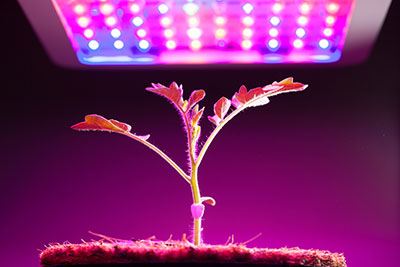
Light is important in indoor growing as the lighting system ensures indoor plants increase nutrition intake, speed up their growth, accelerate flowering, and keep the vegetation healthy. All plants require light for photosynthesis, which converts light, water, and oxygen into carbohydrates (energy). Plants require this energy to grow, bloom, and produce seed. Plants cannot manufacture carbohydrates without light, so the energy reserves are depleted, causing plant death, as Minnesota University explains in the article “Lighting for indoor plants and starting seeds.”
Photosynthesis is a critical process for plants and other photoautotrophs – unique organisms capable of transforming sunlight into usable energy for grow plants. This transformation involves capturing solar energy and converting it into chemical energy.
This stored chemical energy is then utilized for various functions such as biosynthesis, translocation, and reproduction.
Without photosynthesis, there wouldn’t be a mechanism to harness the sun’s energy. The absence of photosynthesis would mean no plant life, leading to catastrophic implications for life on Earth.
The process of photosynthesis involves the use of carbon dioxide and water, with the end products being hexose and oxygen. Except for a few exceptions like albino plants, all plants are self-sustaining, producing their own food through photosynthesis, from which they extract chemical energy as required.
The carbon captured from the atmosphere during this process is also used as the structural foundation for creating organic compounds essential for growth and development.
Photosynthesis uses other mechanisms – light and dark reactions with photosystems I and II to absorb light. To understand these mechanisms better, let’s define their main components first.
Plant photosynthesis occurs within the cell in specialized organelles known as chloroplasts (a type of plastid). Every chloroplast is encased by a double membrane that encloses a stroma.
The stroma is a spacious central area filled with enzyme-rich fluid that converts CO2 to CH2O. Located within the stroma are structures known as grana.
Each granum comprises pouch-like formations or discs referred to as thylakoids, which house light-absorbing chlorophyll and yellow-orange pigments known as carotenoids.
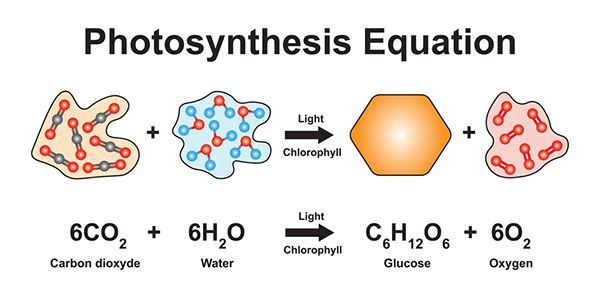
Chlorophyll is the green pigment that captures light during the process of photosynthesis. Chlorophyll a, the most critical photosynthetic pigment, has the empirical formula C55H72O5N4Mg. There are also auxiliary pigments that seize photons of light that aren’t absorbed by chlorophyll a and pass that energy onto chlorophyll a. The most prevalent ones in plants are chlorophyll b (C55H70O6N4Mg) and carotenoids.
Photosynthesis comprises two sequential sets of reactions: light reactions and dark reactions.
Light reactions are part of the photosynthesis process that takes place in the thylakoids, while dark reactions, also known as biochemical, light-independent, or Blackman’s reactions, occur in the stroma of the chloroplasts.
Also referred to as photochemical and Hill reactions, the light reactions of photosynthesis are light-dependent processes. These reactions involve the absorption of solar energy, hence the term “light-dependent,” but they are not affected by temperature changes in the grow room. The phenomenon is the initial stage in photosynthesis, where radiant energy from the sun is captured, and some is stored in a stable chemical form.
Two photosystems, or light-harvesting systems, play a crucial role in capturing light, which is integral to the light reactions of photosynthesis. Photosystem I (PS I) has a reaction center chlorophyll (P700) and absorbs light wavelengths up to 700 nm. The second light-harvesting system, known as photosystem II (PSII), features a reaction center called P680 and absorbs light up to 680 nm.
When either photosystem absorbs a photon of light, it is channeled to the reaction center chlorophyll (PS700 or PS680), which then enters an excited state and becomes an effective reducing agent. The excited electron (from water) is subsequently transferred to an electron transport chain.
The light that enters the process is the same sunlight used as an energy source in photosynthesis, where it gets converted into chemical energy stored in carbohydrates and other organic molecules.
There are two substages in the light-dependent process of photosynthesis.
Firstly, photosystem II oxidizes H2O to oxygen using the energy from sunlight captured by chlorophyll. This process, also known as photolysis of water or splitting of the H20 molecule, produces excited electrons. Simultaneously, the oxidizing agent NADP+ is reduced to NADPH, and oxygen is released into the atmosphere.
This photolysis of H2O takes place in photosystem II. However, the electrons from water have yet to reach NADPH. This is where the photosystem comes in.
Secondly, phosphorylation occurs, leading to ATP formation. The ATP process involves capturing some radiant energy to phosphorylate ADP into ATP.
The dark reactions, also known as biochemical or Blackman’s reactions, are temperature-dependent but light-independent processes in photosynthesis. These reactions don’t require light and can happen in light and dark conditions. However, ATP, NADPH2, and CO2 must be present. These elements enable the reduction of fixed carbon dioxide into carbohydrates.
Are artificial light sources enough for indoor plant growth?
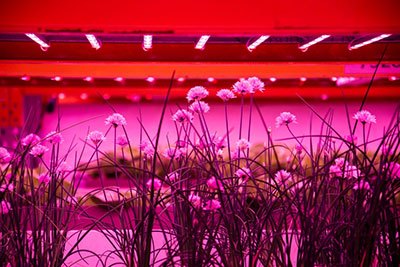
Artificial light sources are enough for indoor plant growth; however, the indoor grow light does not provide the same intensity or full spectrum light as natural light.
Natural light has a perfect balance of wavelengths necessary for plant growth and blooming. It contains all colors of the full spectrum of light, which is essential for photosynthesis. You can manage the light colors for the specific stages of growth in your plants (blue, red, velvet), but you still need natural light for optimal plant health.
Exposure to natural sunlight increases vitamin D levels, improves mood, and regulates sleep. Grow lights allow you to regulate brightness and light intensity to prevent plant damage. Natural light depends on the weather conditions, while the grow lights are consistent regardless of the weather outside.
Sunlight is only available during the daytime, and too much exposure leads to auburn, skin cancer, and damage. The grow lights also cause eye damage if you don’t wear protective glasses and other equipment and require electricity, causing higher bills.
As the environment in the grow tent is purely artificial, use grow lights effectively. To do so, choose LED grow lights for high efficiency and adjustable colors or bright white halogens for more brightness. Use warm, incandescent bulbs for a cozy, relaxing environment.
Measured in Kelvins (K), color temperature impacts mood and productivity. A higher Kelvin value (4000K-6500K) produces a cooler, bluer light. The light covers are great for focus, while a lower value (2500K-3000K) gives off a warmer light, less heat, and less power.
To prevent eye strain, ensure the light source is not directly in your field of vision. Also, avoid using extremely bright light in the evening, as it can disrupt your sleep cycle.
Are there ways to measure light?
There are 8 ways to measure light: PPF, Usable PPF, PPFD, PPE, micromole, foot-candle, lumens, and watts.
Photosynthetic Photon Flux (PPF) measures the total amount of PAR output (Photosynthetically active radiation) that is produced by a lighting system each second. The unit used is micromoles per second (μmol/s).
Usable PPF is a measurement describing the number of photons that are available for photosynthesis. The usable PPF is the number of PAR output – photons hitting the chlorophyll of the plants. Usable PPF is measured in micromoles per second (μmol/s).
Photosynthetic Photon Flux Density (PPFD) measures the amount of PAR that actually arrives at the plant or as a measurement of the intensity of the light. It’s measured in micromoles per square meter per second (μmol/m²/s).
Photon Efficacy (PPE) measures how efficiently a lighting system converts electrical power (Watts) into PAR (PPF). It is expressed in micromoles per Joule (μmol/J).
Micromole (μmol) is a unit of measurement used in chemistry for very small amounts (10^-6) of a chemical substance. In the context of light for plants, it’s used to quantify the number of photons used in photosynthesis.
A foot-candle is a measurement of light intensity. One foot-candle is defined as enough light to saturate a one-foot square with one lumen of light.
Lumens measure the total quantity of visible light emitted by a source. However, this measure doesn’t consider the wavelengths of light and therefore isn’t a good indicator of usable light for plants.
Watts are a unit of power. They measure the rate of energy conversion. Regarding light, watts refer to the electrical power a lamp or light bulb uses.
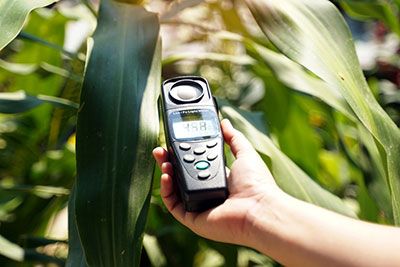
A lux meter/light meter is the most popular way to measure light. Lux meters have a sensor converting light energy into an electrical charge, giving the user a reading.
The least popular method is to measure lumens because it doesn’t consider the effects of non-visual impacts, including the body’s natural circadian rhythms and responsiveness to alertness and sleep cycle.
Researchers often use micromoles per square meter per second (mol/m2/sec) to measure the PAR energy in the field of plant science. This unit and Watts/m2 are interchangeable, meaning either can be used validly for measurements.
When selecting a PAR sensor and meter for plant measurements, choose appropriately. A PAR Energy sensor provides readings in W/m2, whereas PAR Quantum or PAR Special sensors deliver readings in mol/m2/sec.
How to measure the light plants need to absorb in the grow tent?
To measure the light plants need to absorb in the grow tent, determine the PPFD.
To measure the light intensity, use a PAR Meter. A PAR Meter measures light intensity within the 400-700 nm range, representing the light plants use for photosynthesis. This tool provides a more accurate measurement of usable light for plants. Measure PAR over the entire footprint of the grow light to get an accurate average.
To use a PAR Meter accurately, turn on the LED grow lights and stabilize them for a few minutes. Hold the PAR meter at the height of the indoor growing plants and point the sensor directly at the light source. Record the PAR reading on the screen. Move the PAR meter to different locations of your grow tent to get more accurate readings of the LED grow light levels. Compare the PAR recordings to know if your plants receive the required LED grow lights for their growth stage.
Another useful device to measure light intensity is a Quantum Flux Meter. This device measures the total number of photons within the PAR range that hit a specific area per second. It gives the most accurate reading of how much light your plants are receiving.
While a Lux Meter is also used to measure light intensity, it may not work effectively for plant growth since it doesn’t accurately measure the light spectrum plants use for photosynthesis. It is calibrated for human vision, not plant photosynthesis, making it less reliable for grow tent purposes. In other words, a traditional lux meter gives an accurate reading of 500 lux, but the human eye cannot visibly see all 500 lux and only sees 300 lux, so the results are not accurate.
How to calculate grow light PPFD requirements?
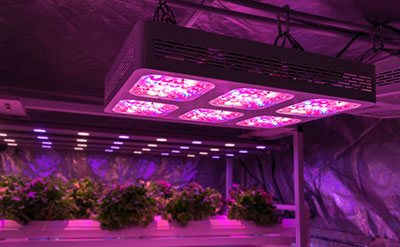
To calculate grow lighting requirements, determine the coverage area. Measure the length and width of your grow tent to find the total square footage of the coverage area. Also, calculate the lighting needs. Most plants grown in an indoor setting require between 20-40 moles of light per square meter per day (mols/m²/d).
To convert this value to a more usable number, aim for a PPFD value between 400 and 600 µmol/m²/s during the vegetative stage and between 600 and 900 µmol/m²/s during the flowering stage.
Once you know your lighting needs, choose a light that can deliver the required PPFD to your plants. Finally, monitor your plants and adjust the light intensity or duration as needed.
Signs of too much light can include yellowing or “burning” of the leaves, while signs of too little light can include stretching or weak growth.
How to calculate grow light wattage requirements?
To calculate grow light wattage requirements, determine the coverage area. Multiply the grow tent’s length and width to get the coverage area’s total square footage.
Once you know the measurements of the grow space, determine the light requirements. You need 32 watts of power per square foot if you’re growing multiple high-light plants like tomatoes or cannabis. For low-light plants, such as lettuces and herbs, 11-18 watts per square foot are sufficient.
Finally, calculate the total wattage. Multiply the wattage needed per square foot by the total square footage of your grow space.
For example, if your grow tent is 10 square feet and you’re growing high-light plants like peppers or tomatoes, you would need around 320 watts of actual power (10 sq ft x 32 watts/sq ft = 320 watts).
How to calculate LED wattage requirement?
If you use individual LED grow lights, multiply the voltage of the LED light (in volts) by the current of the LED grow lights (in amperes). The result is measured in watts.
To calculate the power required for LED strip lights, you need to know the wattage per meter of your LED strip. Multiply the W/m value by the length of the LED strip light to get the total theoretical wattage. You can also use online calculators to determine the LED wattage for LED strip lights.
To calculate the power an entire LED lighting installation uses, use a multimeter to measure the watts accurately. Determine the watts by multiplying the volts by the amps used in your LED grow light system.
If you have multiple LED lights, multiply the voltage and current for each LED light. Next, add these values together to get the total output power of the LED grow lights.
What is the optimal amount of light for indoor plants?
The optimal PPFD and PPF for indoor plants can vary widely based on the plant type and its growth stage. Based on the type of plants you need:
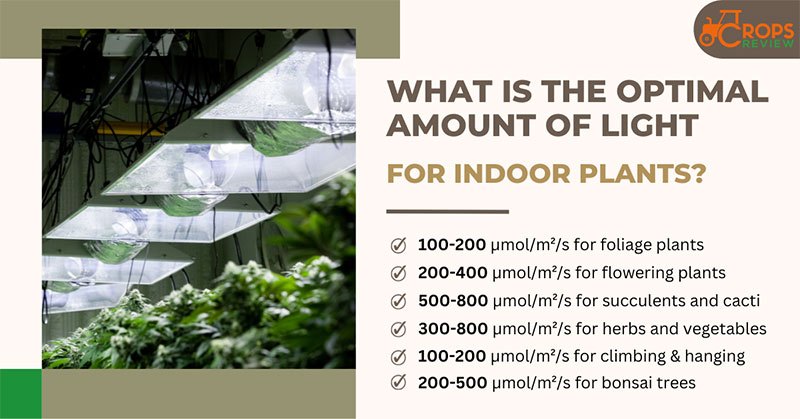
The LED grow light measures 200-400 PPFD for seedlings and clones, 400-600 PPFD for the vegetation stage, and 600-900 PPFD for the flowering stage.
If the readings on the PAR meter are not at the target levels, adjust the LED grow light system (add more or remove lights) to ensure optimal PPFD levels for optimal growth. Excessive LED grow light causes a light burn, while insufficient LED grow light leads to weak, leggy plants.
How much light can cannabis plants use?
Cannabis plants use 30-70 watts of light amount per square foot of canopy.
The area of a 4×4 tent is 16 square feet (4ft x 4ft). Therefore, the light usage for this tent would be between 480 watts (30w x 16sq ft) and 1120 watts (70w x 16sq ft). The area of a 6×6 tent is 36 square feet (6ft x 6ft). Therefore, the light usage for this tent would be between 1080 watts (30w x 36sq ft) and 2520 watts (70w x 36sq ft).
Additionally, cannabis plants typically need 18-24 hours of light per day during the vegetative stage. This amount of light exposure encourages the plant to grow taller and develop a robust structure for the flowering stage. Once the plant transitions to the flowering stage, it requires a 12-hour light/dark cycle. This change in light duration triggers the plant to start producing buds for a higher bud quality. Continued use of a 12-hour red LED grow light schedule encourages a full and healthy growth of the cannabis.
The optimal Usable PPF for cannabis is 65 µmol (1692 lux) per square foot or 700 µmol (18213 lux) per square meter. In terms of lumens, a cannabis plant requires around 9,000 lux as a minimum, while 75,000 lux is maximum
Exposing cannabis plants to more photons than they can use in photosynthesis leads to light stress in plants, and above 80,000 lux increases the risk of bleaching.
How many grow lights do I need for a grow tent?
You need 20 watts per square foot of the grow space for the vegetative stage. You need 30 watts per square foot of the grow space for the flowering stage.
Multiply the wattage values per square foot with the wattage amount required for your grow space to ensure the grow light wattage. The table contains the correct amount of the grow light wattage necessary for each grow space size.
| Grow Room Size | Square Feet | Veg Wattage | Flower Wattage |
| 1’ x 1’ | 1 | 20 watts | 30 watts |
| 2’ x 2’ | 4 | 80 watts | 120 watts |
| 3’ x 3’ | 9 | 180 watts | 270 watts |
| 2’ x 4’ | 8 | 160 watts | 240 watts |
| 4’ x 4’ | 16 | 320 watts | 480 watts |
| 5’ x 5’ | 25 | 500 watts | 750 watts |
| 6’ x 6’ | 36 | 720 watts | 1,080 watts |
| 4’ x 8’ | 32 | 640 watts | 960 watts |
| 8’ x 8’ | 64 | 1,280 watts | 1,920 watts |
| 10’ x 10’ | 100 | 2,000 watts | 3,000 watts |
What is light stress in plants?
Light stress in plants is a condition in which plants are exposed to light levels that are too high or too low for optimal growth and development. Stress leads to various physiological and morphological changes, including reduced growth, discoloration, and altered leaf orientation, as the study at PubMed named “Plants response to light stress” shows.
Light stress in indoor growing plants occurs when the balance between the energy utilized in metabolic processes and energy absorbed by the plant is disrupted, causing oxidative damage, photoinhibition, and reduced photosynthesis efficiency. There are two types of light stress: high light stress and low light stress.
High light stress occurs when indoor plants are exposed to more light than necessary for photosynthesis, increasing heat and burning. Low light stress occurs when plants lack the necessary plants to perform photosynthesis, so they cannot develop and grow fully.
When plants are exposed to too much light, the excess energy overwhelms the plant’s photosynthetic apparatus. The light-absorbing pigment chlorophyll gets damaged, leading to decreased photosynthesis, and plants tend to damage cells. This form of light stress is particularly prevalent in indoor gardening or greenhouse conditions, where artificial lighting is too intense.
On the other hand, insufficient light also causes stress by limiting the plant’s ability to perform photosynthesis, the process by which plants convert light energy into chemical energy. Low light stress leads to slow growth, weak stems, and sparse foliage.
What are the harmful effects of light stress on indoor plants?
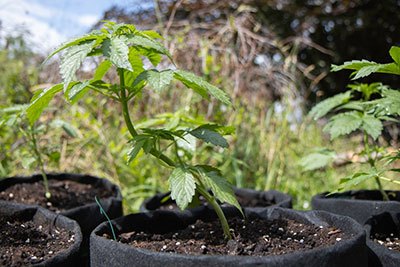
Light stress in indoor plants has 5 harmful effects, including damage to plant trees, reduced growth and productivity, excess heat and dehydration, foliage damage or drop, and effects on photoperiod on sensitive plants. The negative effects cause decreased growth, productivity, and even plant death, as the Journal of Genetics and Genomics explains.
- Damage to Plant Tissues: High light stress causes damage to plant tissues, leading to pale, bleached, or faded areas. These areas eventually become brown and brittle.
- Reduced Growth and Productivity: Both high and low light stress affect a plant’s ability to grow and produce new leaves, flowers, or fruits. Low light intensity doesn’t provide enough energy for plant growth, but high light intensity causes photodamage.
- Excess Heat and Dehydration: Too intense grow lights generate excess heat, which causes the soil to dry out and the plant to suffer from dehydration.
- Foliage Damage or Drop: Excessive grow lights, often coupled with inappropriate temperature and humidity levels, cause foliage damage or even leaf drop.
- Effects on Photoperiod Sensitive Plants: For plants sensitive to day length, such as chrysanthemums, poinsettias, and Christmas cactus, artificial LED grow lights disrupt their normal growth cycles and cause stress.
How do I know if my plants have light stress?
The 9 signs show your plants have light stress:
- Leaf discoloration or bleaching: An evident sign of light stress is the discoloration or bleaching of leaves, especially in mature ones. Discoloration happens due to the decomposition of chlorophyll, the pigment that absorbs light for photosynthesis.
- Hindered growth: Plants under light stress show signs of hindered growth or slow progression as photosynthesis rates decline, limiting the energy needed for growth and metabolic activities.
- Decreased harvest: Light stress leads to decreased yield for crop plants by restricting the energy needed for fruit or seed production.
- Leaf shedding: In extreme cases, plants discard leaves or other parts as a reaction to stress, which further hinders growth and productivity.
- Alterations in leaf color or form: Light stress includes changes in leaf color or form, like the curling or cupping of leaves.
- Diminished plant robustness: Light stress results in diminished plant vigor, as the plant struggles to generate sufficient energy for its metabolic activities, including pest and disease resistance.
- Adjustments in leaf orientation: To avoid excessive light exposure, plants change the direction of their leaves. Some plants, for instance, sunflowers, desert plants, rainforest plants, and corps plants, turn their leaves away from the sun to decrease light absorption.
- Leaf burning or scorching: Exposure to intense light, particularly during hot, arid conditions, leads to leaf scorching or burning. Such conditions result in brown or black spots on the leaves, and the leaves eventually perish.
- Delayed blooming: Light stress upsets the plant’s internal timing and delays or inhibits blooming in plants that depend on photoperiodism to flower.
What is a light stress test in indoor plant growing?
A light stress test in indoor plant growing is a method used to determine the optimal light intensity and duration for a specific plant species. The goal is to find the balance of light that promotes healthy growth without causing light stress, resulting in damage or slowed growth. The plants grow tall and fully bloom with the right light intensity.
To perform the test, expose a small portion of the plant to higher light intensity than normal for a short period, typically a few hours, and observe the plant’s response. If the exposed area shows signs of stress, such as leaf bleaching or curling, it indicates that the plant is experiencing light stress, so it cannot grow tall.
Do plants have a natural defense against light stress?
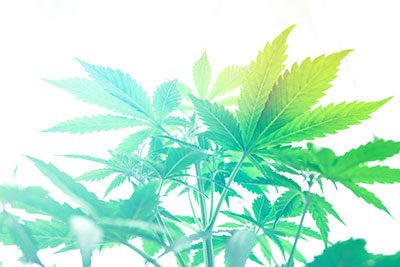
Yes, plants have a natural defense against light stress. They use different methods for high light stress and low light stress.
For high light stress, photoprotection is a crucial mechanism where surplus energy is converted into heat, thus diminishing the creation of damaging reactive oxygen species (ROS). Plants accomplish photoprotection through the augmented production of carotenoids like zeaxanthin and lutein, which function as photoprotective pigments within chloroplasts.
Plants also generate antioxidant enzymes such as superoxide dismutase (SOD), catalase, and peroxidase that aid in neutralizing ROS and safeguarding against oxidative stress. Furthermore, plants enhance the expression of genes related to stress responses, including heat shock proteins, and assist in repairing damaged proteins and membranes.
Another strategy employed by plants to defend against intense light stress is the control of photosynthesis. They decrease the expression of genes involved in the light-dependent reactions of photosynthesis, like those encoding the photosystem II (PSII) reaction center, in response to intense light stress. Photosynthesis prevents the buildup of surplus energy and ROS, reducing the likelihood of photodamage.
Lastly, plants modify their growth and development due to intense light stress. For instance, they produce smaller and thicker leaves, reducing light penetration and enhancing light absorption efficiency. They also devote more resources to root growth, improving water and nutrient uptake. The size of the leaves compared to their usual size can also indicate if a plant is under stress.
For low light stress, a key strategy is the regulation of photosynthesis. Plants augment the expression of genes involved in the light-dependent reactions of photosynthesis, such as those encoding the photosystem I (PSI) reaction center. They enhance energy capture and utilization efficiency and boost the rate of carbon fixation.
Plants also modify their growth and development. They produce larger and thinner leaves, enhancing light interception and maximizing light absorption efficiency. More resources may be allocated to shoot growth, increasing the surface area available for light capture. The size of the leaves indicates if a plant is under low light stress (leaves are smaller than they should be).
Plants generate specific pigments, like anthocyanins and flavonoids, functioning as light-absorbing molecules and protect against oxidative stress. These pigments improve the efficiency of light capture and utilization and can also act as antioxidants to protect against damage from excess ROS.
Plants adjust their metabolism in response to low light stress. They ramp up the production of storage compounds, such as starch and lipids, and store surplus energy to support growth and development when light levels are low.
How to prevent light stress?
To prevent light stress, you can:
- Ensure ideal light intensity: LED grow light harms plants if the light intensity isn’t right, even though they operate at cooler temperatures.
- Regulate light exposure: Giving your plants the right balance of light and darkness is crucial.
- Check the temperature: High temperatures raise the likelihood of light-related damage, while low temperatures intensify the stress caused by low light.
- Supply adequate nutrients: Proper nutrition is vital for plants to sustain their physiological functions and resist stress.
- Avoid excessive watering: Overwatering leads to waterlogged soil and diminished oxygen levels, intensifying light stress effects.
- Ensure good ventilation: Adequate ventilation maintains ideal temperature and humidity levels and reduces the risk of diseases and pest infestations.
- Slowly adapt plants to high light intensity: If you’re transitioning plants from a low to high light environment, do so slowly to avoid light damage. Start with a lower light intensity and gradually increase it over time.
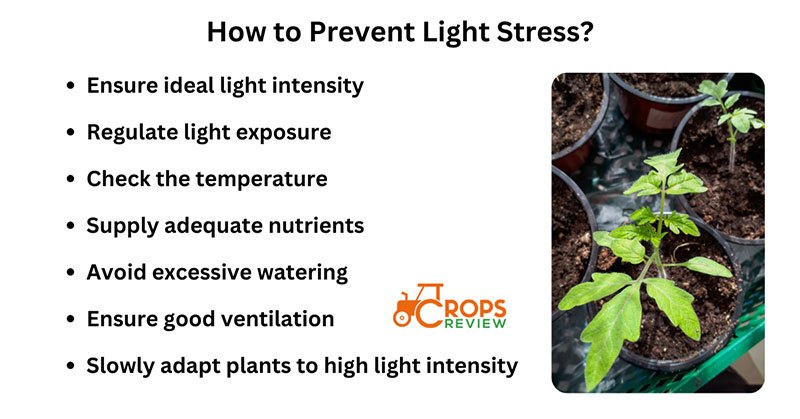
How to fix light stress in plants?
To fix the light stress in plants, growers must first identify the specific cause of stress and take appropriate corrective measures. To fix high light stress, you can:
Relocate the plant to a less sunny spot: If the plant is exposed to excessive light, shifting it to a place with softer light intensity or using shading materials like a shade cloth or curtains could be beneficial.
Diminish light intensity: If the plant is being subjected to too much artificial light, lessen the light intensity by increasing the distance of the light fixture, dimming the light, or switching to a bulb of lower wattage.
Boost humidity: High light intensity escalates evaporation and dehydrates the plant, so enhancing the humidity around the plant can help mitigate the stress. A humidifier or a water tray placed near the plant can be used to boost humidity.
Trim damaged leaves: If signs of light damage are visible on the plant, prune the affected leaves to prevent further harm and enable the plant to focus its energy on healthy growth.
To fix low light stress, you can:
- Relocate the plant to a sunnier spot: If an outdoor plant isn’t getting enough light, shift it to a place with more sunlight or add artificial lighting to supplement natural light. Bringing the lighting fixture closer or increasing the brightness can help for indoor plants.
- Modify light exposure: If the plant isn’t getting enough light, alter the light schedule to extend daylight hours or use artificial lighting to prolong the light period.
- Use fertilizer: If nutrient deficiency is causing low light stress in the plant, use a balanced fertilizer to provide the necessary nutrients for growth.
- Prune plants for better airflow: If the plant is becoming elongated and leggy due to low light, prune it to encourage denser growth and enhance air circulation around it.
What you need to know about the science of light for plants
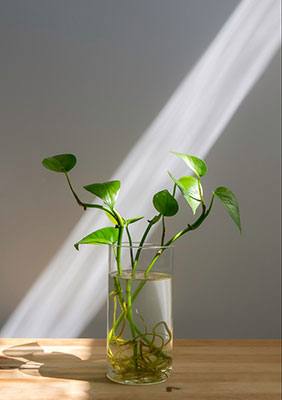
Visible light is the portion of the electromagnetic spectrum that the human eye can perceive. It ranges from approximately 400 nanometers (violet) to 700 nanometers (red). This light is responsible for the colors we see in the world.
On the other hand, invisible light refers to light beyond the visible spectrum that the human eye cannot perceive without special equipment. It includes ultraviolet light (UV), infrared light (IR), X-rays, and radio waves.
Light is crucial for photosynthesis, allowing plants to transform light energy into chemical energy, necessary for reproduction, as the Journal of Integrative Agriculture explains.
Plants use the full spectrum divided into different colors: violet, blue, green, yellow, orange, and red. Blue and red grow lights are the most beneficial for plant growth. Blue light stimulates vegetative growth like leaves and stems, while red light promotes flowering and fruiting.
To know what light is and how to evaluate it is necessary as the plants filter the air we breathe by using chlorophyll. Light also regulates our sleep-wake cycle, according to a study, “Effects of light on human circadian rhythms, sleep and mood,” published in the PubMed Journal.
Consider factors such as intensity, color temperature, quality, direction, duration, and wavelength to evaluate the light.
- Intensity refers to the brightness or amount of light produced by a source. It’s often measured in lumens or lux.
- Color temperature measures light’s color characteristics, usually described as “warm” (yellowish) or “cool” (bluish). It’s measured in Kelvin (K).
- Quality refers to how accurately a light source reproduces colors. It’s often measured by the Color Rendering Index (CRI).
- Direction refers to where the light is coming from and where it’s directed.
- Duration refers to how long a light source is on. Different wavelengths of light (red, blue, green, etc.) have different effects. For example, plants use red and blue light most efficiently for photosynthesis.
What is light intensity?
Light intensity refers to the amount or quantity of light that a surface receives. It is usually measured in lumens or foot-candles. The light intensity is measured in terms of lumens per square foot (footcandles) or lumens per square meter (lumens).
Light intensity plays a pivotal role in the growth and development of trees. High light intensity typically stimulates tree growth by increasing the rate of photosynthesis up to a certain threshold. It encourages branching, leaf development, and influences the tree’s shape and size.
What is light quality?
The light quality, also known as its spectral composition or spectral energy distribution (SED), is characterized by the wavelengths of light that are beneficial for photosynthesis and other plant growth and developmental processes.
These wavelengths are denoted in tiny distance units like microns (μ) or micrometers (μm), nanometers (nm), and angstroms (Å).
A micron equates to one-millionth of a meter (10-6 meter); a nanometer is equivalent to one-billionth of a meter (10-9 meter) or one-thousandth of a micron, and an angstrom equals one ten-billionth of a meter (10-10 meter) or one ten-thousandth of a micron.
What is the distance from the light source?
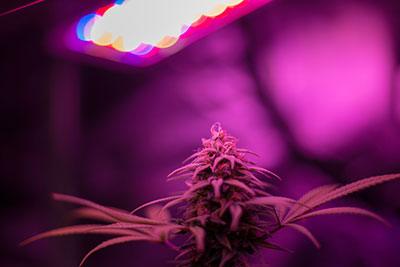
The distance from a light source refers to the space between a plant and the light source used for its growth. This distance is critical in indoor gardening or grow tents as it directly impacts the light intensity received by the plant, affecting the plant’s photosynthesis process, growth, and development.
- Seedlings require a less intense light source about 24-36 inches away to prevent light burn while providing adequate light for growth.
- During the vegetative stage, plants are growing foliage and need more light. They require a closer light source, 18-24 inches away.
- In the flowering stage, plants require the most light. It’s placed 12-24 inches away from the plant.
High-intensity lights like HID lamps must be placed further away (around 24-36 inches) because they produce more heat. On the other hand, LEDs, which produce less heat, are placed closer to the plants (around 12-24 inches).
What is the light duration?
Light duration, also known as photoperiod, refers to the length of time that a plant is exposed to light during a 24-hour cycle. The duration of light that a plant receives impacts its growth and development, influencing processes such as photosynthesis, flowering, and dormancy.
During the vegetative stage, most plants need more hours of light to grow and thrive. It’s common to provide 18-24 hours of light per day.
In the flowering stage, many plants, especially those that flower (like cannabis), require a period of darkness to trigger the flowering process. A common light-dark cycle for these plants is 12 hours of light and 12 hours of darkness.
- Short-day plants like poinsettias and strawberries require long periods of darkness, less than 12 hours of light per day, to trigger flowering.
- Long-day plants like lettuce and spinach require more than 12 hours of light daily to trigger flowering.
- Day-neutral plants like cucumbers and tomatoes provide a flowering that isn’t affected by light duration.
What types of artificial light sources are used in indoor gardening?
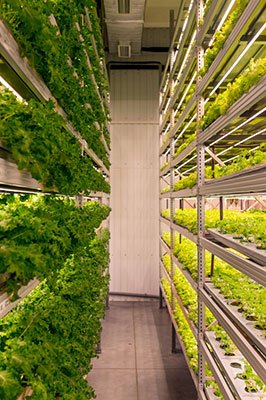
5 main types of artificial light sources are used in indoor gardening, based on the grow tent’s sizes, such as 2×2 ft, 4×4 ft, 2×4 ft, 6×6 ft, etc. The size of your tent helps you find the right type of grow light listed below:
1. LED (Light Emitting Diode) Grow Lights – specifically designed for larger (6×6 ft, 8×8 ft) and smaller tents (2×2 ft, 2×4 ft)
- Pros: Energy-efficient, long lifespan, customizable spectrum, low heat output.
- Cons: Higher upfront cost, spectrum might not be optimal for all plant types if not adjustable.
2. Fluorescent Grow Lights – for a small tent (2×2 ft)
- Pros: Energy-efficient, low heat output, inexpensive.
- Cons: Less light intensity, not ideal for larger plants or flowering stages.
3. Incandescent Lamps – for small tent sizes (2×2 ft) and large tent sizes (4×4 ft)
- Pros: Cheap, readily available.
- Cons: Highly inefficient, short lifespan, high heat output.
4. High Pressure Sodium (HPS) grow lights – for smaller and larger tent sizes (2×2 ft, 4×4 ft, 6×6 ft, etc.)
- Pros: High light intensity, efficient in terms of lumens per watt, good for the flowering stage.
- Cons: High heat output, requires additional equipment (like ballasts), one-dimensional light spectrum.
5. Metal Halide (MH) Lights – for a small grow tent (2×2) and a larger tent size (up to 5×5 ft)
- Pros: Good for the vegetative stage, decent efficiency.
- Cons: High heat output, requires additional equipment, shorter lifespan compared to other types.
